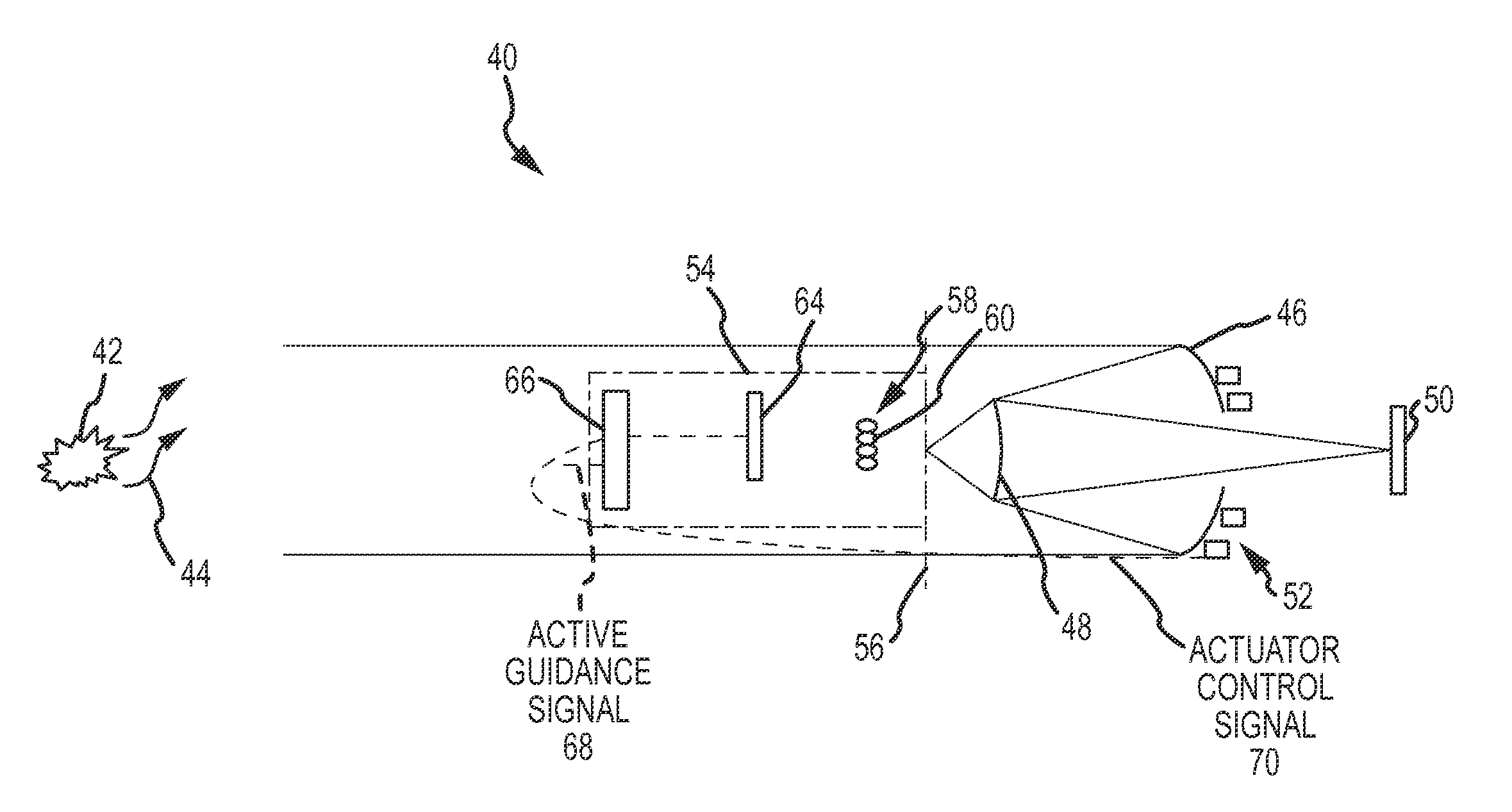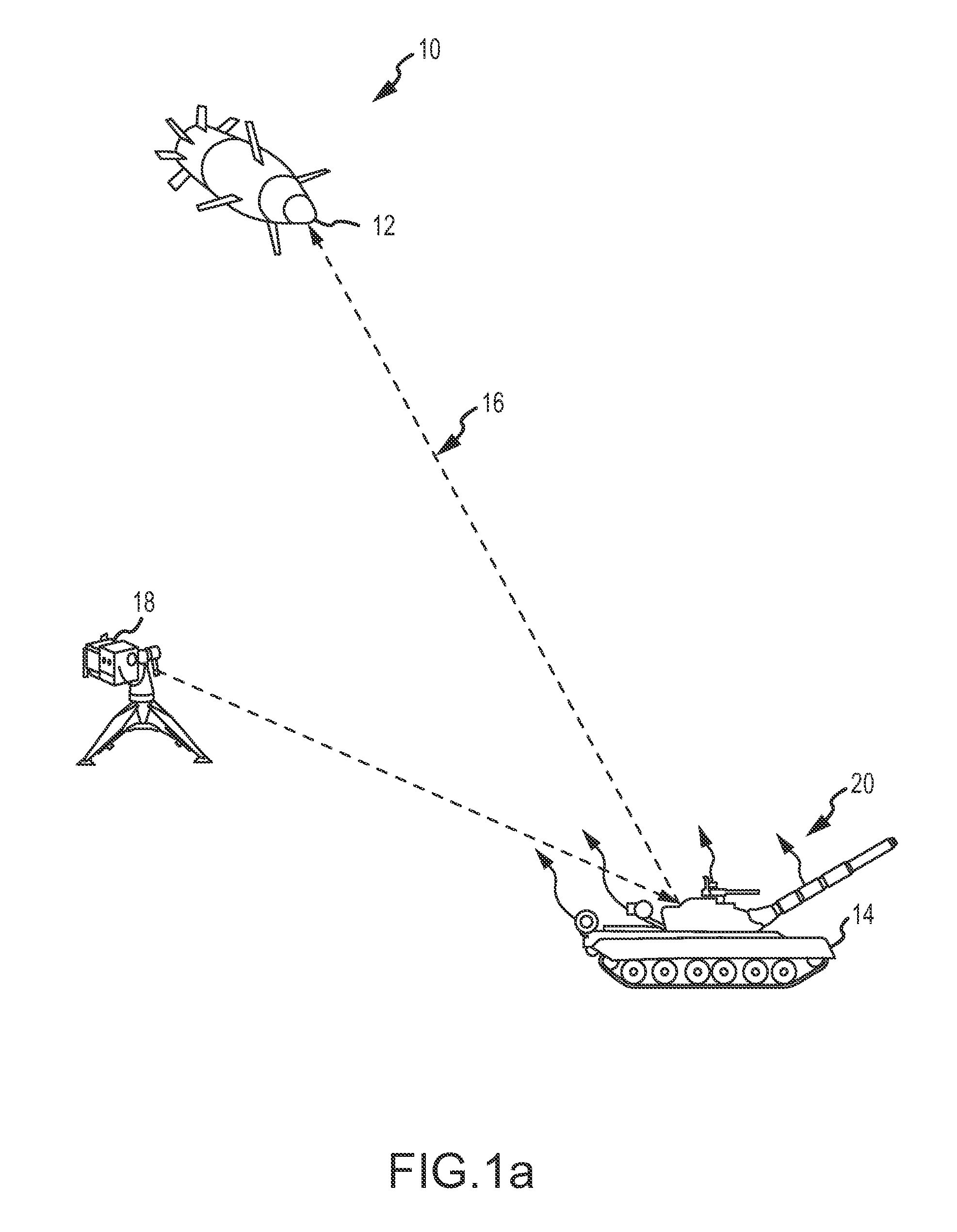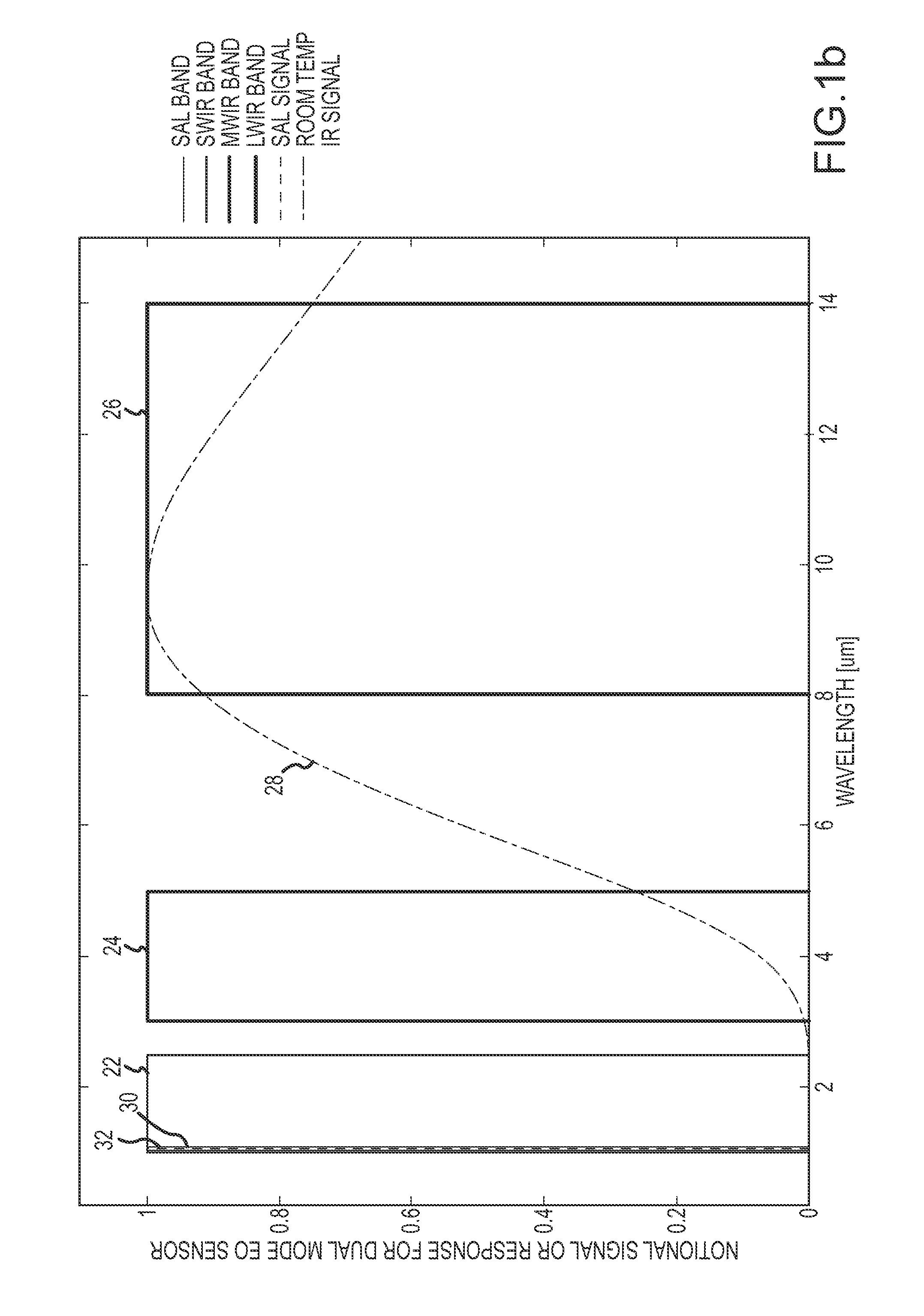Dual-mode electro-optic sensor and method of using target designation as a guide star for wavefront error estimation
a wavefront error estimation and dual-mode technology, applied in direction controllers, instruments, weapons, etc., can solve the problems of mechanical stress, degrade system performance, and substantially degrade the high-resolution ir mode performance, so as to reduce wavefront errors and improve the estimate of target position
- Summary
- Abstract
- Description
- Claims
- Application Information
AI Technical Summary
Benefits of technology
Problems solved by technology
Method used
Image
Examples
Embodiment Construction
[0022]The present invention provides a dual-mode sensor for a guided munition that generates a wavefront error estimate for the primary optical element in-situ without interfering with the normal guidance operation. The wavefront error estimate is accomplished by using the active guidance radiation as a “guide star” to generate an artificial point source in the scene that will enter the dual-mode sensor as a planar wavefront. An array of optical focusing elements performs the normal function of spatially encoding an angle of incidence of the active guidance radiation at an entrance pupil onto an active imaging detector. The array also performs an additional function of spatially encoding wavefront tilt deviations emanating from sub-pupils of an exit pupil onto the active imaging detector. The array may be configured to perform the two spatial encodings in parallel or time sequentially. A processor processes the electrical signals from the imaging detector in accordance with the resp...
PUM
 Login to View More
Login to View More Abstract
Description
Claims
Application Information
 Login to View More
Login to View More - R&D
- Intellectual Property
- Life Sciences
- Materials
- Tech Scout
- Unparalleled Data Quality
- Higher Quality Content
- 60% Fewer Hallucinations
Browse by: Latest US Patents, China's latest patents, Technical Efficacy Thesaurus, Application Domain, Technology Topic, Popular Technical Reports.
© 2025 PatSnap. All rights reserved.Legal|Privacy policy|Modern Slavery Act Transparency Statement|Sitemap|About US| Contact US: help@patsnap.com



